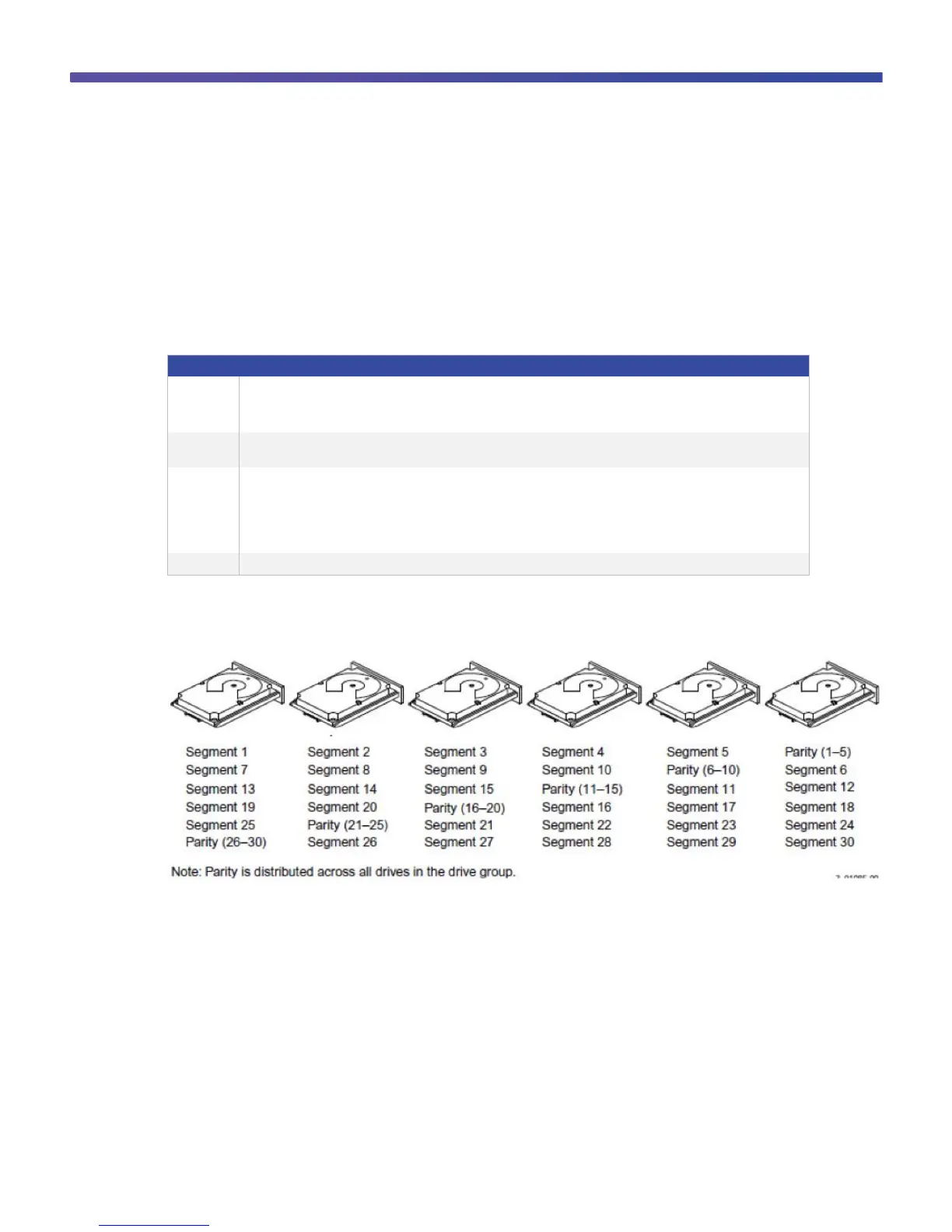© 2014 Cisco and/or its affiliates. All rights reserved. This document is Cisco Public. Page 6 of 33
RAID 5
RAID 5 includes parity and disk striping at the block level. Parity is the data’s property of being odd or even, and
parity checking is used to detect errors in the data. In RAID 5, the parity information is written to all drives. RAID 5
is best suited for networks that perform a lot of small I/O transactions simultaneously.
RAID 5 is excellent for environments with applications that have high read request rates but low write request
rates. Table 4 provides an overview of RAID 5. Figure 5 shows an example of RAID 5 use.
Table 4. RAID 5
●
Provides high data throughput, especially for large files
●
Good for transaction processing applications because each drive can read and write independently
●
If a drive fails, the parity drive of the RAID controller is used to re-create all missing information
●
Provides data redundancy, high read rates, and good performance in most environments; provides redundancy
with lowest loss of capacity
●
Not well suited to tasks requiring numerous write operations
●
Suffers a greater impact if no cache is used (clustering)
●
Drive performance is reduced if a drive is being rebuilt
●
Not well suited for environments with few processes; such environments do not perform as well because the
RAID overhead is not offset by the performance gains in handling simultaneous processes
Figure 5. RAID 5 Drive Group with Six Drives
RAID 6
RAID 6 is similar to RAID 5 (it provides disk striping and parity), except that instead of one parity block per stripe,
there are two. With two independent parity blocks, RAID 6 can survive the loss of any two drives in a virtual drive
without losing data. It is well suited for data that requires a very high level of protection from loss.
RAID 6 is excellent for environments with applications that have high read request rates but low write request
rates. Table 5 provides an overview of RAID 6. Figure 6 shows an example of RAID 6 use.
